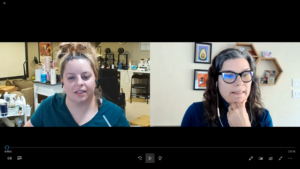When Is the Right Time to Invest In Your Dreams?

Whether you’re wanting to quit your day job and go full time in your business, invest in some equipment to level up your production, or get a higher level of education in your field, all of us face choices about when to invest in our dreams. Let’s talk about how to make these decisions from a financial perspective.
Consider Your Timing
First, establish a timeline for yourself on making this investment. By when would you like to start your training, hire an employee, etc? Now, think realistically about other events and expenses that may come up around that time. For example, making a large equipment purchase around the holiday season may prove to be financially stressful. By analyzing your timeline and any upcoming expenses, you can plan to have the funds and energy on hand to take this new leap.
Establish a Savings Cushion
Especially because these decisions are typically financially loaded, it’s important to already have, or begin to cultivate, a multi-layered savings cushion. Ideally, you have a savings cushion to cover periodic expenses, and another to cover income-loss emergencies, typically an amount to cover 3-12 months of your expenses saved up. You can read more about establishing a savings cushion in my article “How to Plan for Surprise Expenses“. Take a look at these ideas and then make a plan to establish a savings cushion before taking your big step.
Tune Up Your Money System
 This is a good idea whenever you’re making any financial decision. Take a look at your income and expenses and see how things are going with your savings. Making a regular habit of doing this is immensely helpful and can simplify financial decisions like this one. My e-Book 9 Secrets to Financial Self Care has a lot of great insights on how to establish a habit of checking in with your money.
This is a good idea whenever you’re making any financial decision. Take a look at your income and expenses and see how things are going with your savings. Making a regular habit of doing this is immensely helpful and can simplify financial decisions like this one. My e-Book 9 Secrets to Financial Self Care has a lot of great insights on how to establish a habit of checking in with your money.
If you have yet to set up a money system, you might like to check out my articles on money-mapping. “The 4 Components of a Restorative Money System” is a great place to start.
I hope these suggestions are helpful and that your decisions making process is a peaceful one!
Angela











 The bottom line here is that it’s important to look at both your personal and your business finances separately, and as they relate to each other. We have to look at the whole pie, so to speak. Many business owners might have one field or the other down pat, but having confidence in both areas takes a bigger understanding of how they work together. If you feel you have a lot of clarity in your business but struggle to pay personal bills, or vice versa, it’s time to take a step back and re-evaluate. The two inform each other.
The bottom line here is that it’s important to look at both your personal and your business finances separately, and as they relate to each other. We have to look at the whole pie, so to speak. Many business owners might have one field or the other down pat, but having confidence in both areas takes a bigger understanding of how they work together. If you feel you have a lot of clarity in your business but struggle to pay personal bills, or vice versa, it’s time to take a step back and re-evaluate. The two inform each other.


 Take time to think about what potential expenses may arise in the future. Perhaps you use a lot of special equipment in your business, and some of it is getting into disrepair. Maybe you simply have a hard time remembering when insurance or tax payments are due. Take note of all of these things and factor them into your money system or savings plan. Write important due dates on the calendar well ahead of time so you’re aware of them. Have an equipment replacement fund set aside for when your laptop or pottery wheel or farm vehicle finally busts or needs repair. The more you can anticipate these things and incorporate some wiggle room into your money system, the less you’ll be knocked sideways financially when they do come up.
Take time to think about what potential expenses may arise in the future. Perhaps you use a lot of special equipment in your business, and some of it is getting into disrepair. Maybe you simply have a hard time remembering when insurance or tax payments are due. Take note of all of these things and factor them into your money system or savings plan. Write important due dates on the calendar well ahead of time so you’re aware of them. Have an equipment replacement fund set aside for when your laptop or pottery wheel or farm vehicle finally busts or needs repair. The more you can anticipate these things and incorporate some wiggle room into your money system, the less you’ll be knocked sideways financially when they do come up.


 A couple pointers for inspiration: if you feel like you’re not getting paid enough, check out my article on
A couple pointers for inspiration: if you feel like you’re not getting paid enough, check out my article on 


 In addition to stepping up to give your emotions some space, this is also a time
In addition to stepping up to give your emotions some space, this is also a time 


 Search for feedback. Listen to your customers to continue innovating and refining your product or service. If you have a team of other people, focus on them to keep things fresh and engaging. Brainstorm together and streamline your business partnerships.
Search for feedback. Listen to your customers to continue innovating and refining your product or service. If you have a team of other people, focus on them to keep things fresh and engaging. Brainstorm together and streamline your business partnerships.









